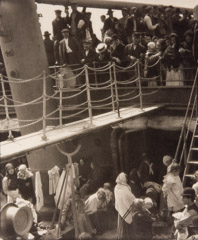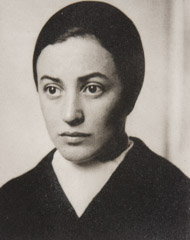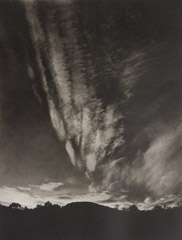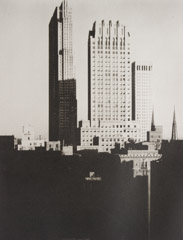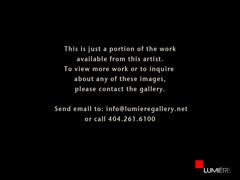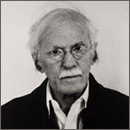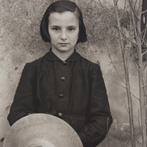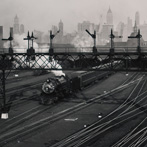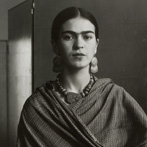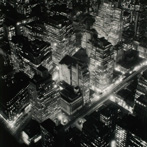Alfred Stieglitz
Alfred Stieglitz (1864 – 1946)
Stieglitz was an American photographer and modern art promoter who was instrumental over his fifty-year career in making photography an accepted art form. In addition to his photography, Stieglitz is known for the New York art galleries that he ran in the early part of the 20th century, where he introduced many avant-garde European artists to the U.S. He was married to painter Georgia O’Keeffe.
Stieglitz was born in Hoboken, New Jersey, the first son of German-Jewish immigrants. He attended high school in Germany. In 1884 his parents returned to America, but Stieglitz remained in Germany for the rest of the decade. During this time Stieglitz began to collect the first books of what would become a very large library on photography and photographers in Europe and the U.S. He read extensively as he collected, and through his library he formulated his initial thinking about photography and aesthetics. In 1887 he wrote his very first article, “A Word or Two about Amateur Photography in Germany”, for the new magazine The Amateur Photographer. Soon he was regularly writing articles on the technical and aesthetic aspects of photography for magazines in England and Germany.
Sometime in late 1892 Stieglitz bought his first hand-held camera, a Folmer and Schwing 4×5 plate film camera. Prior to this he had been using an 8×10 plate film camera that always required a tripod and was difficult to carry around. He was invigorated by the freedom of the new camera, and later that winter he used the new camera to make two of his best known images, “Winter, Fifth Avenue” and “The Terminal”.
Stieglitz soon gained a fame for both his photography and his writing about photography’s place in relation to painting and other art. In the spring of 1893 he was offered the job of co-editor of The American Amateur Photographer, which he quickly accepted. In order to avoid the appearance of bias in his opinions and because Photochrome was now printing the photogravures for the magazine, Stieglitz refused to draw a salary. From then on he wrote most of the articles and reviews in the magazine, and he quickly gained an enthusiastic audience for both his technical and his critical writings.
In May of 1896 Stieglitz formed the Camera Club of New York. By 1902 he tired of big camera clubs and organized an invitation-only group called the Photo-Secession to force the art world to recognize photography “as a distinctive medium of individual expression.” Among its members were Edward Steichen, Gertrude Kasebier, Clarence White, and Alvin Langdon Coburn. Photo-Secession held its own exhibitions and published Camera Work, a pre-eminent quarterly photographic journal, until 1917.
From 1905 to 1917, Stieglitz managed the Little Galleries of the Photo-Secession at 291 Fifth Avenue (which came to be known as the 291). In 1910, Stieglitz was invited to organize a show at Buffalo’s Albright-Knox Art Gallery that set attendance records. He was insistent that “photographs look like photographs,” so that their realism would allow painting to become more abstract.
In 1924, Stieglitz married O’Keeffe, and they spent the next two decades in artistic and personal collaboration, until Stieglitz’s death in 1946.
The work of Alfred Stieglitz is featured in this exhibition.
(Select the image to view the exhibition page)

